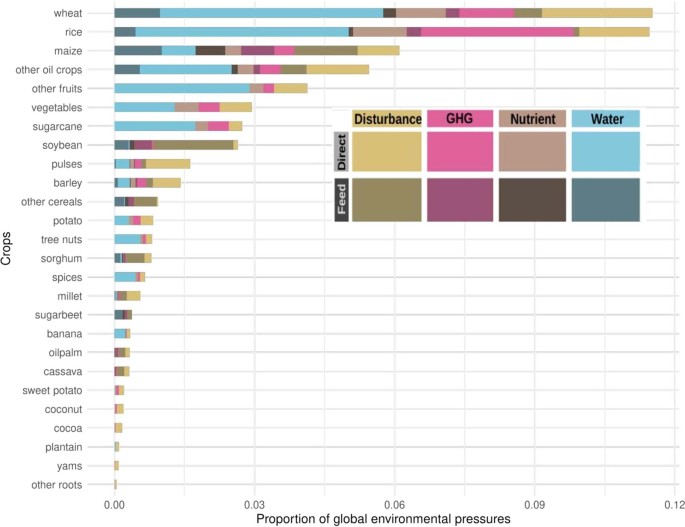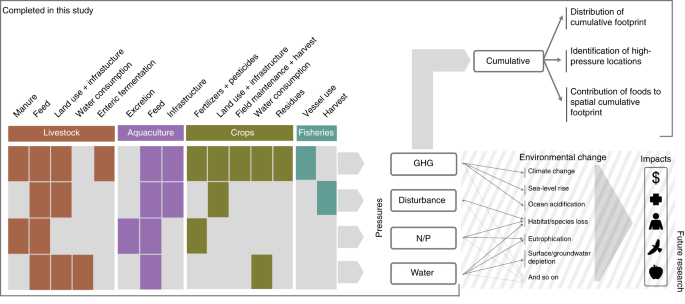Feeding humanity puts enormous environmental pressure on our planet. These pressures are unequally distributed, yet we have piecemeal knowledge of how they accumulate across marine, freshwater and terrestrial systems. Here we present global geospatial analyses detailing greenhouse gas emissions, freshwater use, habitat disturbance and nutrient pollution generated by 99% of total reported production of aquatic and terrestrial foods in 2017. We further rescale and combine these four pressures to map the estimated cumulative pressure, or ‘footprint’, of food production. On land, we find five countries contribute nearly half of food’s cumulative footprint. Aquatic systems produce only 1.1% of food but 9.9% of the global footprint. Which pressures drive these footprints vary substantially by food and country. Importantly, the cumulative pressure per unit of food production (efficiency) varies spatially for each food type such that rankings of foods by efficiency differ sharply among countries. These disparities provide the foundation for efforts to steer consumption towards lower-impact foods and ultimately the system-wide restructuring essential for sustainably feeding humanity.
https://eprints.whiterose.ac.uk/193443/1/Halpern_etal_with_figures.pdf
Extended Data Fig. 3 Proportion of total global cumulative pressure for crops, broken down by pressure (components of each bar).

Came in wanting a comparison that weighted it by calorie because total impact doesn’t really tell you how good various foods are relative to others. Most of the study seems to be behind a paywall but what I was looking for isn’t.
Though it doesn’t include feed for animals, so the meat products aren’t as good as they look there.
Yes.
There’s a PDF link to an earlier version in the text/description of the post.
The comparison is not just relative, which is also important.
Most of the people on the planet get their calories from plants. And also their proteins. :)



